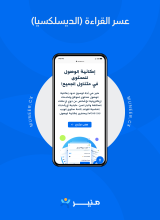
The principle of "Understandability" in the Web Content Accessibility Guidelines (WCAG) 2.1 is crucial for achieving this goal. It mandates that content be clear and simple, allowing users of all cognitive and technical levels to easily comprehend and interact with it. In this article, we will explore how the Muneer tool effectively achieves this principle, enhancing user experience and ensuring compliance with WCAG standards.
Understandability: The Essence of Clear Interaction
The concept of "Understandability" involves web content being easy to read and comprehend for all users, regardless of their technical or cognitive knowledge levels. The language used should be simple and clear, with straightforward instructions, ensuring that content is predictable and consistent. This principle requires the use of plain language, clear instructions, and ensures that information and interactive forms are easily understood without complexity.
1. Features of the Muneer Tool for Achieving Understandability
- Using Simple and Clear Language: Simple and clear language is a prominent feature of the Muneer tool that aids in achieving understandability.
- Simplifying Texts: Muneer works to transform complex texts into simpler and clearer versions, making it easier for users to understand the information provided.
- Using Common Terminology: Muneer ensures the use of common and understandable terms instead of complex technical language, making content easier to comprehend.
- Compliance with Standard 3.1.5 (Reading Text): This standard aims to ensure that texts used are simple and easy to read, enhancing content understandability.
2. ADHD Mode: A Tailored Experience for Users with Attention Deficit Hyperactivity Disorder
- Reducing Visual Distractions: This mode removes distracting elements from the page, such as unnecessary ads and animations, helping users focus better on the main content.
- Organizing Content Clearly: Helps in organizing content in a way that aids users in following texts and instructions without distractions, enhancing their ability to effectively utilize the information provided.
- Compliance with Standard 2.2.2 (Pause, Stop, Hide): This standard helps control moving content or visual effects that could confuse users and prevent them from understanding the content.
3. Providing Clear and Direct Instructions:
- Visual and Auditory Guidance: Muneer provides visual and auditory guidelines that explain to users how to use various features, ensuring that all users, regardless of their abilities, can easily understand the content.
- Guiding Users: Muneer ensures that step-by-step instructions are provided to users when interacting with forms and interactive content, simplifying the process and reducing the likelihood of errors.
- Compliance with Standard 3.3.2 (Labels or Instructions): This standard requires that labels and instructions be clear and understandable, aiding users in navigating through content interactions.
4. Supporting Readers with Dyslexia:
- Dyslexia Font: A dyslexia-friendly font has been developed to be clearer and easier to read, helping users interact more effectively with texts and content.
- Providing Alternative Texts: The dyslexia font supports the provision of alternative texts and customized reading options for users who struggle with reading, enhancing their ability to access information and digital services.
- Compliance with Standard 1.4.4 (Resize Text): This standard requires that texts can be enlarged without losing content or functionality, enhancing understandability.
In conclusion, the "Understandability" principle enhances all users' ability to interact effectively with web content. Through features like the ADHD mode and the dyslexia font in the Muneer tool, this principle can be effectively achieved, ensuring a comprehensive and clear digital experience for all users. These features reflect our commitment to providing web content that is easy to understand and use, thus enhancing compliance with WCAG 2.1 standards.
Let us work together to build a more inclusive web for everyone.

